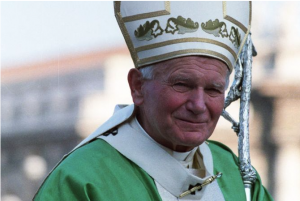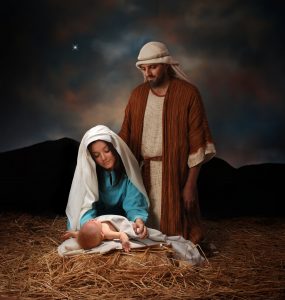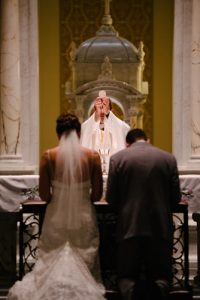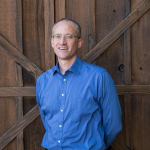
An Integral Vision of Man
June 13, 2023
For many months now, we have been exploring Pope St. John Paul II’s reflections on “original man” (i.e., man and woman before the Fall). We have pondered original solitude, original unity, and original nakedness as well as the logic of gift, the spousal meaning of the body, and marriage as the primordial sacrament. Before we go on to the next major topic of TOB, it may be useful to revisit the overall purpose and structure of the late pope’s reflections.

Through his pastoral ministry as a priest and bishop, John Paul II was well aware of the questions faced by men and women today: Who am I? Where did I come from? Where am I going? How can I find fulfillment? What is love? He was also well acquainted with the myriad ethical dilemmas facing modern man as our technological mastery of nature — including the human body — has grown exponentially in the last 100 years. In the 1960s, he was deeply involved in the Church’s deliberations regarding contraception and served as a key theological advisor to Pope St. Paul VI who, in 1968, reiterated the Church’s perennial teaching on the immorality of contraception in his encyclical letter Humanae vitae. However, Paul VI recognized that in order to receive this teaching fully, modern man needs to see how it corresponds to his nature and his good. In this regard, Paul VI spoke of the need for “an integral vision of man” and sketched some aspects of such a vision. However, he left it to his brother priests, bishops, and theologians to develop and expound such a vision to support not only the Church’s teaching against contraception but all of her teachings in the area of sexual ethics, which increasingly are held in suspicion or even scorn.
Desiring to help develop such “an integral vision of man” that could answer the existential questions of contemporary men and women and show them the truth and beauty of Catholic moral teaching, Pope St. John Paul II wrote his TOB reflections. He used the phrase “theology of the body” as a working title for his reflections because it is impossible to understand what it means to be human without pondering the human body, which is intrinsic to who we are. Even more, he saw in the Incarnation of Christ how the human body plays a central role in salvation history. That is why he remarked,

“The fact that theology also includes the body should not astonish or surprise anyone who is conscious of the mystery and reality of the Incarnation. Through the fact that the Word of God became flesh, the body entered theology… I would say, through the main door” (TOB 23:4, italics in original).
In TOB, Pope St. John Paul II followed the example of Christ who responded to questions from the Sadducees about divorce by appealing to “the beginning” and quoted the opening pages of Genesis. For this reason, the late pope began TOB by going back to the beginning and pondering “original man” (i.e., man and woman before the Fall). Up to this point, our explorations have focused on this portion of TOB. However, the late pope’s reflections did not remain there. To complete his “integral vision of man,” he again followed the example of Christ and reflected on “historical man” (i.e., fallen and redeemed) and “eschatological man” (i.e., in view of the resurrection and eternal glory). After this three-fold reflection on man, the late pope provided an extensive reflection on the sacramentality of marriage before finally turning to matters of sexual ethics.

Having highlighted the teachings on “original man” in these articles, we will next be delving into historical and eschatological man. This deep dive into TOB will not only help us understand and embrace more fully the Church’s teachings on marriage and sexuality but will also show us how to live fulfilled lives in accord with God’s plan. This is especially true for those called to marriage, as Pope St. John Paul II pointed out:
“Those who seek the fulfillment of their own human and Christian vocation in marriage are called first of all to make of this ‘theology of the body’… the content of their lives and behavior” (TOB 23:5).
Let us all — married or otherwise — heed the saintly pope’s words and continue to ponder God’s beautiful design for us through the lens of TOB.
Note: This article is part of a series of reflections on Pope St. John Paul II’s “Theology of the Body.”

Written by, Dr. Andrew Sodergren, M.T.S., Psy.D.,
Director of Ruah Woods Psychological Services
(Article originally published in The Catholic Telegraph, September 2022 Issue, the official magazine of the Archdiocese of Cincinnati)
Share